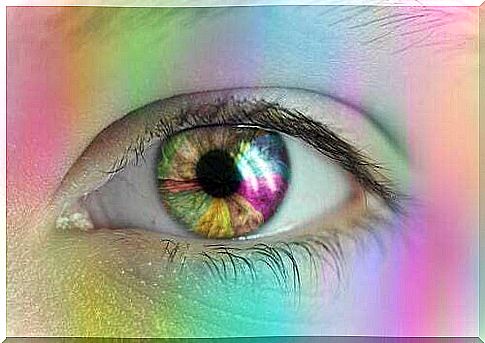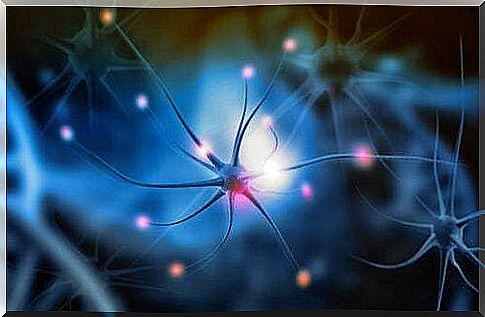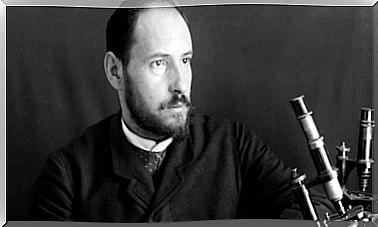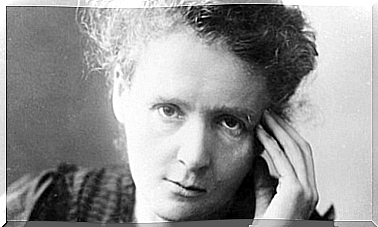Perception Of Color: An Extraordinary Skill

Color perception is an interesting and complex topic. Many wonder if we all perceive it the same way. Who has never asked a friend what color they see a given object?
The visual system perceives two types of colors: achromatic colors (white, black and gray) and chromatic ones. When we talk about color, we refer to chromatic colors and the correct term is hue. Despite this, the most widespread and well-known concept is that of color.
The fundamental question is: what determines the color we perceive through the visual stimulus? In other words, why do we see colors and how do we see them? Several theories have addressed the perception of color throughout history. In this article we present the most important ones.
Thomas Young’s Theory of Perception
In 1802, Thomas Young proposed one of the first theories of color vision: the component or trichomatic theory, expanded by Hermann von Helmholtz in 1852. According to this theory, there are three different types of color receptors (cones), each with a different spectral sensitivity. In addition, the color of a stimulus is encoded by the amount and proportion of activity of those receptors.
Later, Ewald Hering proposed the theory of the color adversary process in 1878. Hering postulated the existence of two types of cells in the visual system intended to encode color and another type intended to encode brightness.
His hypothesis revolved around the fact that each cell type encodes the perception of two complementary colors (pairs of colors that produce white or gray when combined to the same extent).

What is Hering’s theory based on? Complementary colors don’t come together. In the words of the author, “there are no shades like blue-yellow or green-reddish”. Another argument on which his theory is based is that the afterimage produced by fixing the red color is green and vice versa. As well as the afterimage when looking at the yellow color is blue and vice versa.
For many years, researchers have come close to one or the other theory, but over time it has been shown that both coding mechanisms coexist in the visual system. Let’s go deeper.
Evidence confirming both theories
Young’s theory was confirmed only in the early 1970s thanks to microspectrophotometry, a technique for measuring the absorption spectrum of photopigments contained in cones. With the help of this instrument, the existence of three types of cones in the retina of living beings with good color perception was observed.
At the same time, each of these cones was found to contain a different photopigment with its particular absorption spectrum. Some cones are more sensitive to long wavelengths, others to medium waves, and others to short waves.
Compared to Hering’s theory, Chatterjee and Callaway (2003) verified the opposite color processing at all levels of the retino-geniculo-striated system. Thanks to this, they found that some cells respond in one direction to a color and in the opposite direction to its complementary color.
The constancy of color and the Retinex theory
Previous theories do not explain a fundamental aspect in the perception of color: constancy. This concept refers to the fact that the color we perceive of an object is not simply a function of the wavelengths that are reflected.
For example, when we see our living room at dawn, the light is not the same as that of noon. The wavelengths change, but we perceive the same color. The wall in our room may seem more or less dark depending on the light, but we know it is always the same color.
Constancy of color is therefore “the tendency of an object to maintain the same color despite large changes in the wavelength of the light it reflects (Pinel, 2012)”. Indeed, it provides us with an adaptive function in our ability to distinguish some objects from others, since if this were not the case, the color would change every time the lighting changes.
The Retinex theory of color perception
Land’s Retinex theory (1977) holds that “the color of an object is determined by its reflection (ie the proportion of light of different wavelengths reflected off a surface)”.
Hurlbert and Wolf (2004), following this theory, state that “the visual system calculates the reflection of surfaces. In this way, it perceives colors by comparing the light reflected from adjacent or near surfaces in at least three different wavelengths (short, medium and long) ”.
In other words, the visual system is able to calculate the wavelengths reflected by a surface and still perceive the same color despite changes in lighting. It doesn’t matter if an object receives more or less light, its color will not change for us.
Shapely and Hawken (2002) state that Land’s theory is important because it suggests the existence of cortical neurons involved in color vision, that is, in its perception.

Science continues to study color perception
Despite great scientific advances in terms of brain activity, there is still a lot to discover about color perception. This is a very current topic and on which new discoveries have been made in recent years. Theories evolve, so it is possible to discard some, complete others and discover new ones.









